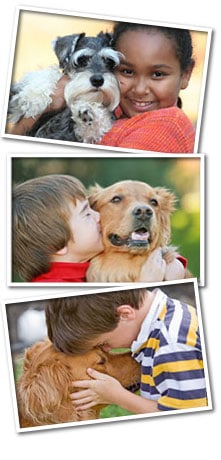Pet obesity is an increasing problem for most domestic animals. Dogs, Cats, and other pets are at risk for obesity simply due to the nature of being a pet. Most pets are well fed regularly and don’t spend enough time exercising to properly balance the calories they’re consuming with how many they’re using. Unfortunately, similarly to people, being overweight can increase the likelihood of health problems in the long term.
Food is naturally converted into sugars when digested. These sugars are either used to provide energy for activity or they are stored as fat which acts as a resource for when food isn’t readily available. Most pets are fed regularly though and the fat stores aren’t ever needed, so they continue to build rather than being expended. That along with the fact that every time the animal eats even more fat is stored can lead to weight problems for pets. Some amount of fat storage is normal for all pets, problems arise when there is an excess.
This excess of fat can lead to many health problems. Most of these problems are very much like the health issues that occur in overweight people. Joint damage and arthritis, ligament trouble, spinal trouble, diabetes, respiratory issues and hearth disease are all health concerns for overweight pets. Overweight pets are also at risk during surgery and while on any anesthetics which can make treatment of these problems increasingly difficult.
The most important step to fighting obesity in pets is a feeding schedule. Keeping a full bowl in the house will allow a pet to eat even when it isn’t necessary which can lead to excess fat production and storage. Having two or three scheduled smaller meals will allow a pet to burn off the energy it gets through eating before eating more. Feeding the appropriate food for the animals age and activity level can also help greatly with controlling pet weight. Consulting with a veterinarian is the best way to determine what food is best and how much to feed. It is also best to avoid feeding table scraps on top of an already sufficient diet.
As with people the next most important part of controlling weight is exercise. Also same as with people a pet that is overweight already may have trouble getting used to the increased activity level due to decreased stamina. Consulting with a veterinarian is the best way to determine an appropriate level of activity for a specific pet. Your pet will benefit from consistent activity, and will likely have noticeably increased energy and a better attitude after regular exercise for an extended period of time.
While weight loss is important to increasing the lifespan of your pet and bettering their quality of life, it is important to remember that it takes time to properly get your pet into shape. Starving a pet to encourage weight loss can be even more detrimental to their health than over feeding them. Consult with a veterinarian to come up with a plan to help your pet reach their maximum potential. Your pet will be glad you did!

